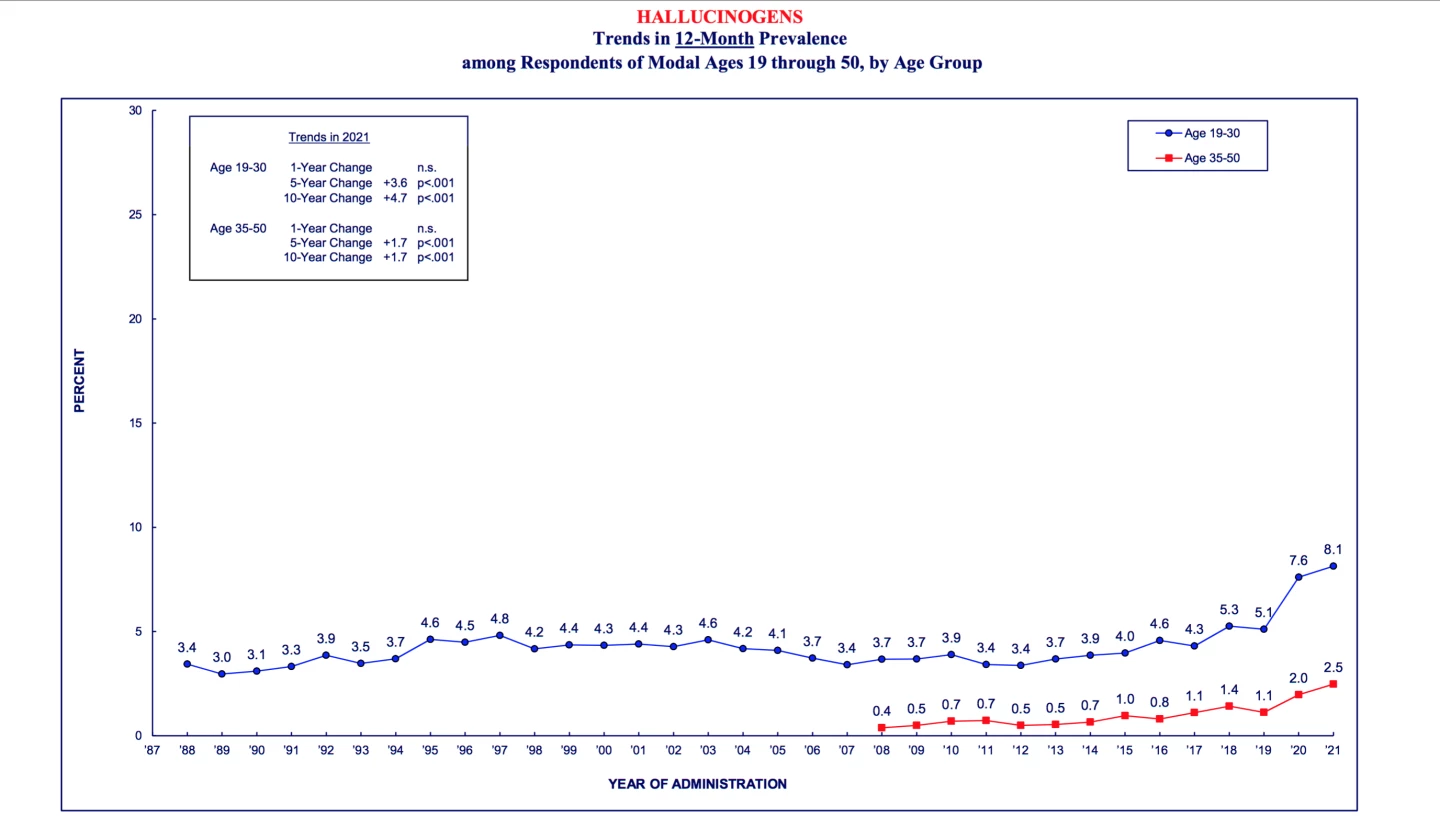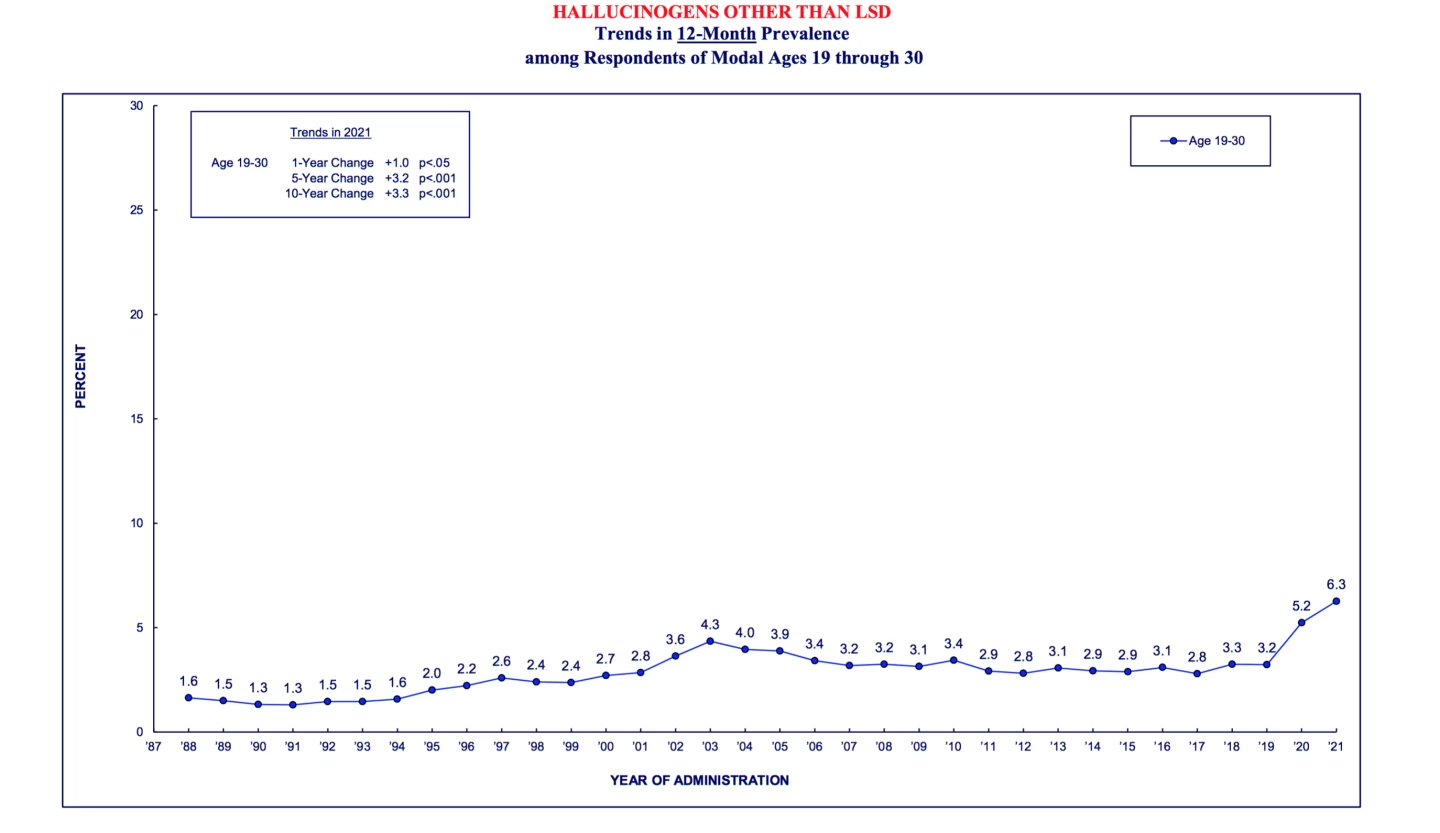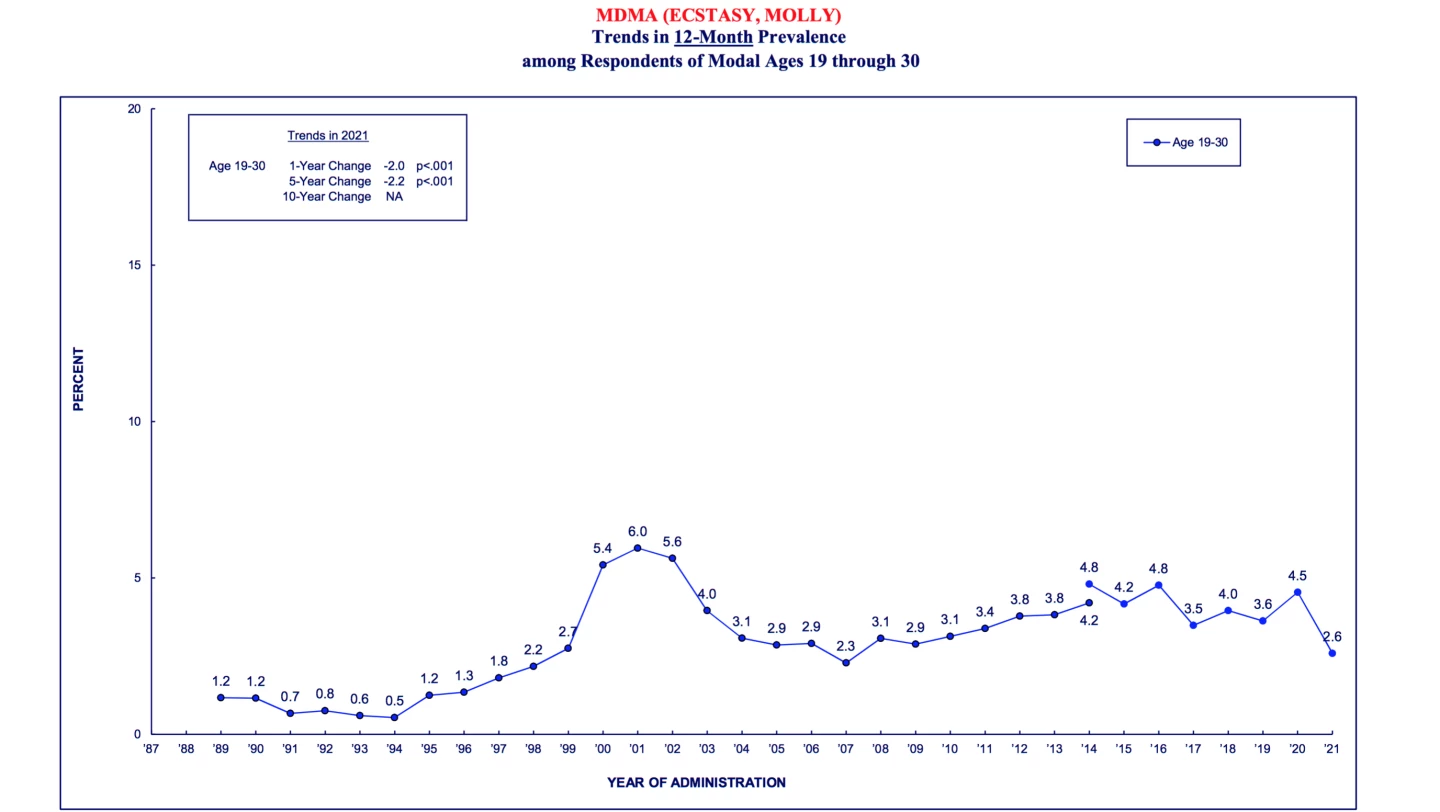New data from an annual drug-use survey supported by the US National Institutes of Health has found recreational use of psychedelics among older adults in the US is at the highest point ever-recorded in the survey’s nearly 40-year history. The data also indicates while alcohol and tobacco consumption is still trending down, marijuana-use has increased.
The Monitoring The Future (MTF) study began in 1975, initially surveying drug-use habits in a single class of senior high school students. Over the next few years the survey expanded to include younger school students, while annually following up with all prior participants.
As the cohort grew older the survey started offering compelling insights into middle-aged American drug use. In the late 1980s, once the initial cohort hit their 30s, the survey expanded to include a more granular tracking of different drug use behaviors.
The latest MTF survey, collected between April and October in 2021, offers revealing insight into changing drug use trends in the United States. And perhaps the most significant change in recent data has been the incredible increase in hallucinogen use across nearly all age groups.

In this year’s survey 8.1% of those aged between 19 and 30 reported using a hallucinogenic drug over the previous 12 months. This is a startling increase from 3.4% a decade ago, and 5.1% just two years ago in 2019.
Even more interestingly, rates of recent hallucinogen use among 35 to 50-year-olds has significantly increased as well, rising from 1.1% in 2019 to 2.5% in 2021. Back in 2012 only half a percent of respondents in that age group reported using hallucinogens in the last 12 months.
Exactly what kinds of psychedelics are being used is unclear. The survey only reports LSD use and “Hallucinogens other than LSD,” and even this limited data is only available for the age group spanning 19 to 30.

And while 19 to 30-year-olds are reporting record-high LSD use (4.7% in 2020 compared to 1.4% in 2012), those taking “Hallucinogens other than LSD” have dramatically increased recently.
A startling 6.3% of those aged 19 to 30 reported taking a hallucinogen other than LSD in 2021. This compared to just 3.2% in 2019, and a previous record high of 4.3% in 2003.
While there is no data to clarify, it is difficult to look at these numbers and not speculate they have been influenced by recent broad media coverage on psychedelics. Stories on the therapeutic effects of psilocybin, for example, have been impossible to ignore over the past few years.

Curiously, not all drugs reported in modern “psychedelic renaissance” media have increased in use. For example, MDMA, which is currently in the advanced stages of clinical trials as a treatment for PTSD, dropped in use amongst 19 to 30-year-olds from a recent high of 4.8% in 2016 to just 2.6% in 2021.
Other insights in the new MTF data show a promising waning of the early 2000s opioid epidemic. Use of “Narcotics other than heroin” dropped from a record high of 8.9% among 19 to 30-year-olds in 2006 to 1.7% in 2021. Use in older adults also dropped from a high of 5.1% in 2010 to 3.4% in 2021.
Cigarette smoking among 19 to 30-year-olds hit its lowest level ever at 2.4% in 2021, and the general prevalence of alcohol-use dropped to a record low of 81.8%. On the other hand, marijuana use has unsurprisingly dramatically increased over the past decade, with 42.6% of young adults reporting using the drug at some point over the past 12 months, up from 28.6% in 2012.
“One of the best ways we can learn more about drug use and its impact on people is to observe which drugs are appearing, in which populations, for how long, and under which contexts,” explained principal investigator on the MTF study, Megan Patrick. “Monitoring the Future and similar large-scale surveys on a consistent sample population allow us to assess the effects of ‘natural experiments’ like the pandemic. We can examine how and why drugs are used and highlight critical areas to guide where the research should go next and to inform public health interventions.”
The full 2021 MTF report can be found here (PDF).
Source: NIH







